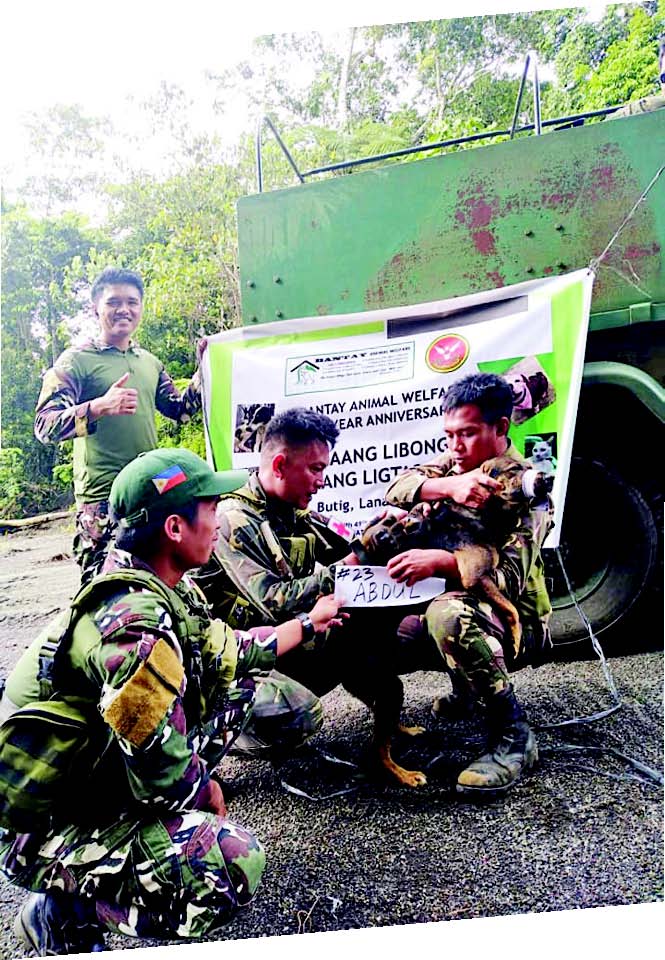For 15 years, the Butig City battlefield in Lanao del Sur was home to Zamora Ramallosa.
He was no stranger to the bullet-ridden buildings or to the dust-covered roads coursing through the city. It was hard being a soldier, he said — there was a constant battle with the enemies and, sometimes, himself.

But spending 15 years in the battleground taught him more than just being a soldier, because what evolved in him was a hero made to save lives.
A Soldier
At 22, Ramallosa turned his back on being a tricycle driver and followed the footsteps of his older brother to become a soldier. He left his wife Sheila and their three daughters — Rein, 12; Miacah Rayne, 9; and Le Anne, 7 — to serve his country. He was deployed to Lanao del Sur as a company medic and later on became a platoon sergeant first class.
Ramallosa joined other soldiers in Lanao to fight the Maute group but the clash left him wounded after getting got shot in the left side of his neck, which injured his carotid artery. That happened in December: The only gifts he received on Christmas Day were the Gold Cross from the President and another shot at life.

“Nagpapasalamat po ako sa medal, pero secondary na lang naman po yung award eh. Ang mahalaga dun ay nagawa ko ‘yung tungkulin ko bilang sundalo. (I’m grateful for the meda, but the award is just secondary. What’s important is I did my job as a soldier),” said Ramallosa during a phone interview.
He showed strength and bravery to survive in a war zone, but it would take a lot more than that for him to win a major battle.
Recovering from the wounds
The road to recovery for this 37-year-old soldier was Ramallosa’s hardest battle yet. Left in their camp to recover from his fatal wound, he suffered from depression.
“Hindi madaling maging sundalo dahil mas kalaban mo ang sarili mo (It’s not easy being a soldier because you become your own enemy),” he stated. “Minsan nag-iisip na rin nang kung ano-ano sa kubo, [lalo] na at malayo kami sa aming mga pamilya. Mahirap. (Sometimes, our minds wander, especially because we are far from our families. It’s hard.)”
According to HealthLine.com, it was common for soldiers who fought in battle to suffer from depression. Ramallosa, who has been through tough times, especially when his patient died under his care, was no exception.
However, Ramallosa found solace in the company of a few puppies whom he rescued from the side of the road. “Yung mga aso yung nagbigay sakin ng reason mag-survive at may dahilan ulit makayanan yung kalungkutan dito (The dogs gave me a reason to survive and endure despite my depression),” shared Ramallosa.

Saving them was only the beginning of his mission. He also aimed to promote animal welfare in Butig after witnessing cruelty toward dogs and cats.
“May mga Muslim kasi na sinasaktan o kaya tinatapon na lang yung mga aso dito. Kaya parang simula [noon], naging layunin ko nang tulungan yung mga asong minamaltrato, (There are Muslims who hurt or throw away dogs here. Since then, it became my goal to to help abused dogs.)s” he shared.
According to Dr. Ayoub M. Banderker, a veterinary surgeon, it was a sad reality that there were still some Muslims who mistreated dogs because “Islam forbids them to keep a dog” and dogs were perceived as unclean, as mentioned in the Animals in Islam website.

Just like Dr. Banderker, Ramallosa wanted to change the community’s perspective to help lessen animal cruelty in the war zone. “Isang malaking challenge din talaga na baguhin yung nakasanayan ng mga sibilyan. (It’s a big challenge to change people’s ways.)”
Community effort
On May 23, 2017, Ramallosa joined the fight in Marawi City and came back to camp a hero after they took back the city from the Islamic State of Iraq and the Levant (ISIL) on October 23, as reported by Maxine Betteridge-Moes in a 2017 article for Al Jazeera.
Though he accomplished his mission to protect his countrymen, Ramallosa wasn’t done helping animals in war-ravaged Mindanao. He contacted Bantay Animal Welfare (BAW), an animal welfare organization in Manila, to assist him with anti-rabies vaccination.
In a Facebook post, Rhodes Lao of BAW said, “Marami po sa ating mga sundalo doon ay animal lovers. Ang pangungulila nila sa pamilya nila ay napupunan ng loyalty at lambing ng mga aso sa paligid nila. (Many of our soliders there are animal lovers. Even though they miss their families, they feel better with dogs around them who show them loyalty and affection.)” He then asked BAW members to donate money for the vaccines.
BAW members donated and delivered about 100 anti-rabies vaccines to Butig.
Ramallosa was the first to accomplish something of the sort in the community. He advocated the safety of both humans and animals by teaching responsible pet ownership and fostering relationships among soldiers, civilians, and animals in Mindanao.“Nakakatuwa at kahit papaano, sa simpleng pamamaraan ko ay na-lessen ang animal cruelty dito sa amin. Hindi pa naman tapos ang aming mission at ipagpapatuloy pa rin namin, (It makes me happy that in my own small way, I helped to lessen animal cruelty in our community. Our mission isn’t over and we intend to continue it.)” said Ramallosa.
As of June 4, 2018, their project “Isandaang Libong BAW – Isandaang Ligtas na Rabies” has launched in two more sites in Mindanao. Ramallosa led fellow soldiers in the project, with the support of their battalion commander.
This appeared in Animal Scene magazine’s February 2019 issue.





